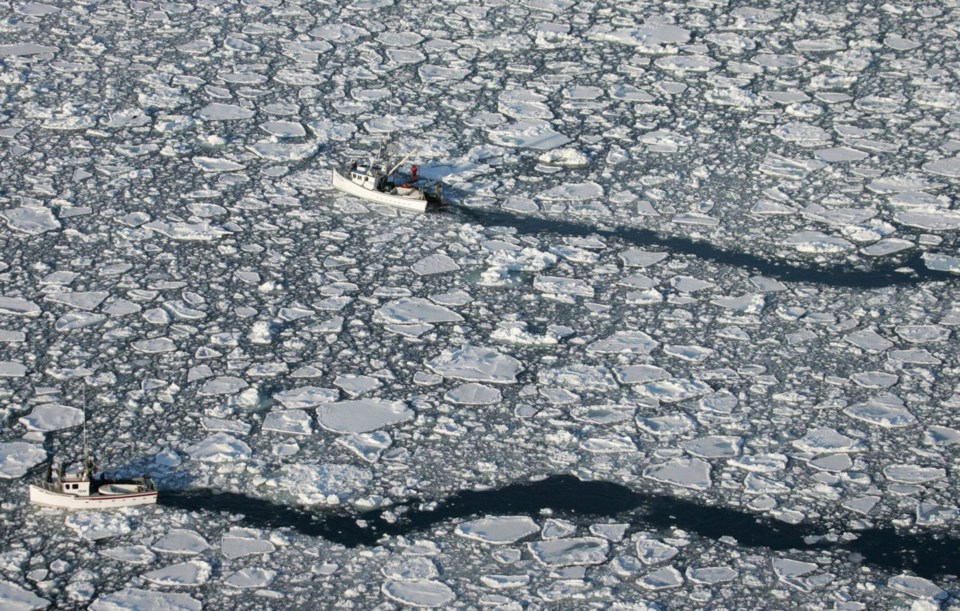MONT-JOLI — Last year, the Gulf of St. Lawrence recorded its highest maximum surface temperature and lowest seasonal volume of ice cover in decades, say researchers with the federal Fisheries Department.
Surface temperatures and ice cover are directly related to air temperature, said Peter Galbraith, a research scientist in physical oceanography at the agency's Maurice Lamontagne Institute in Mont-Joli, Que., northeast of Quebec City.
Last July, the surface temperature hit 16.7 C, a record since data started being recorded in 1981, and 2.4 C warmer than average. Between May and November, the warmest surface temperature was 11.6 C, also a record, and 1.6 C higher than average.
“So it was the warmest air temperature, which gave us the warmest sea surface temperature,” Galbraith said.
The findings were presented at a briefing Friday on the state of the Gulf of St-Lawrence, with scientists presenting data from studies conducted last year on the marine environment.
Aside from having the highest surface temperature in 2024, the Gulf of St. Lawrence also recorded the lowest seasonal ice cover since 1969.
Sea ice is linked to winter air temperature between December and March. In the winter of 2023-24, the volume of ice cover was six cubic kilometres, compared to 14 cubic kilometres in the winter of 2024-25. The two winters are among the seven winters since 1969 that saw almost no sea ice.
“So our winters are warming quite a lot faster than the rest of the year, which is going to lead to more frequent years with very low sea ice cover in the Gulf of St. Lawrence," Galbraith said.
But the shift in temperatures is not linear. The last four years have been warmer than average, but so far this year, temperatures are closer to the average in April and May.
"So we might not have (a) hugely warm summer, we can't expect with climate change to have year after year after year of really, really hot," Galbraith said. "There's going to be some interannual variability, so we have to manage these expectations."
One species having to contend with the sea ice is the Northwest Atlantic harp seal.
Joanie Van de Walle, a specialist in population dynamics with the Fisheries Department, said the seals are dependant on quality ice. Harp seals track the edge of the ice because that's where they find their preferred food, but it's also where they reproduce, give birth, and where young pups develop.
The gulf herd breeds near the Iles-de-la-Madeleine in the middle of the Gulf of St. Lawrence. When ice is limited, as it was in 2024 in the gulf, it was not considered a successful reproductive year. Some pups were abandoned by females because the ice drifted.
"Sometimes there is ice, but the ice is not of good enough quality, but some females still (give birth) in those conditions and that's when we see the most important impacts because the ice can break and that can lead to the drowning of the pups," Van de Walle said.
"In years where there is very poor ice, we see massive mortality events for the pups."
Galbraith said projecting in the future, it's possible the gulf won't have any sea ice 75 or 100 years down the line, with the occasional cold polar vortex creating a rare ice event.
If there's no ice, Harp seals may eventually move to other habitats where better ice exists, Van de Walle said.
"And in that case it would be probably even better for the stock because there they could encounter better conditions to give birth, but also to nurse and produce viable pups," she said.
This report by The Canadian Press was first published May 23, 2025.
The Canadian Press



